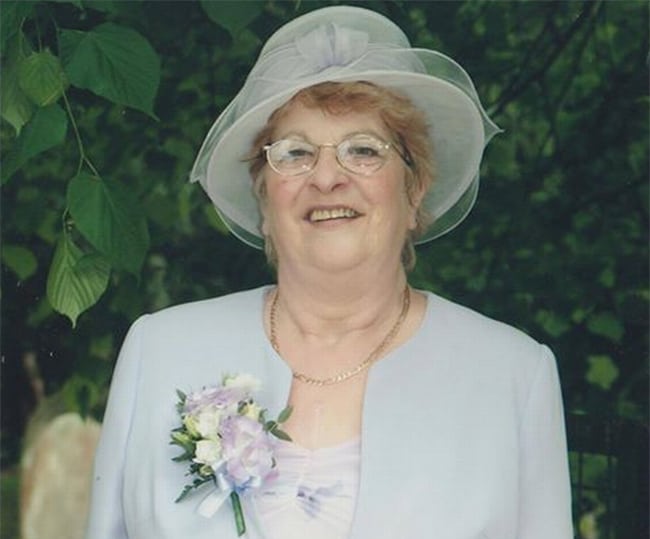Comment: Industry expert shares thoughts regarding stairlift provision following tragic accident

After Dorothy Fowler suffered a fatal accident involving her stairlift at her home in Bath last December, her bereaved daughter Teresa Fowler was impelled to call into question the current system of providing stairlifts to residents in private homes.
Reading the story on the other side of the world, Doug Jack, Managing Director of New South Wales-based Ideal Stairlifts and a stairlift veteran with in-depth knowledge of the UK market, wrote into THIIS to share his thoughts and insights.
Read Teresa’s full letter, originally submitted to Somerset Live, to learn more details about the incident. If you are in the industry and wish to share your thoughts on this story, contact info@thiis.co.uk
By Doug Jack, Managing Director of Ideal Stairlifts
I read with interest the story of the incident in Bath and the unfortunate death of the lady after, it seems likely, falling from her stairlift.
I own and run of the largest stairlift companies in Australia, distributing Platinum Stairlifts, and previously worked for Acorn for almost 20 years both in the UK and here in Australia.
A couple of points struck me in this piece and also in the original piece from Somerset Live.
First of all, the ‘extension over the front door’ appears to indicate a hinged rail. In my experience, a hinged rail should never be fitted where it can obstruct a front door. The front door is the primary access for emergency services and seconds lost negotiating alternate access or forcing past a blockage can mean lives lost. The authority or housing association should never have approved this configuration. The stairlift installer should never have fitted it.
Second, the age of the lift appears to be considerable. It has been some years since stairlifts were manufactured mains powered but if the stairlift stopped, as described, when the meter ran out then this must clearly be the case. There is then also a strong possibility that this stairlift had a fixed seat, rather than a swivel seat, given that the only thing to stop the fall was an armrest. Had the seat been swivelled, the entire chair is there to prevent a fall.
I suspect also that to fall as described with the arm raised, that the footrest may also have been raised. Did the lady then step out expecting the footrest to be there and find to her tragic cost that it wasn’t? There are aspects of this story that do not quite add up.
More generally, local authorities have, for many years, recycled aged stairlifts that do not conform to current safety or design standards.
I myself visited a lady in Derbyshire some years ago in the capacity of newly appointed MD for Brooks Stairlifts. This lady had been using a Brooks Supreme stairlift and experienced gearbox failure and crashed down the stairs under freefall. She thankfully survived but suffered horrific leg injuries.
The stairlift was at least 10 years old and had been recycled by the local authority despite not complying with the standards in force at the time. It had been installed by their contracted installation company. It had not been handled by Brooks since its manufacture all those years before. We had only shortly before contacted local authorities to advise them that the use of stairlifts without overspeed governors was hazardous.
Of course, despite offering modern compliant replacements at below trade price, we were accused of scaremongering and profiteering….. until it was too late.
All products evolve over time as do approaches to safety, and at some point, the old technology has to be deemed unsafe and taken out of service. I would suggest, drawing from the scant detail provided, that this is the case here. The industry should not be drawn into question as modern stairlifts operate with a significantly higher level of safety.
What should, however, be looked at is the re-use of ageing stairlifts within the grant system. It seems evident that despite caution being advised (about 15 years ago now) to every local authority nationwide, and even to the office of the Deputy Prime Minister at the time, that these superseded and now significantly ageing stairlifts are still in service.
A user’s ability to safely use a stairlift, be it independently or under supervision, should also be assessed and monitored as our customers’ conditions do deteriorate by their very nature. This, however, is the responsibility of the user, their carers and perhaps assigned case managers or occupational therapists – not the manufacturer or installer, at least once the lift is in situ.
The implication at the close of the Somerset Live piece that stairlift companies are somehow responsible because they have ‘made their profit’ is frankly offensive, yet forgiven in light of the emotive circumstance. The writer fails to acknowledge the many years of successful use, or that the stairlift had fulfilled her mothers’ wish to remain in the family home.
Stairlifts are not fundamentally unsafe when specified and used correctly. They are designed and approved for use in private homes and are generally less suitable for aged care establishments. Sometimes, however, when conditions deteriorate, the user is no longer safe and alternate solutions should be looked at.


